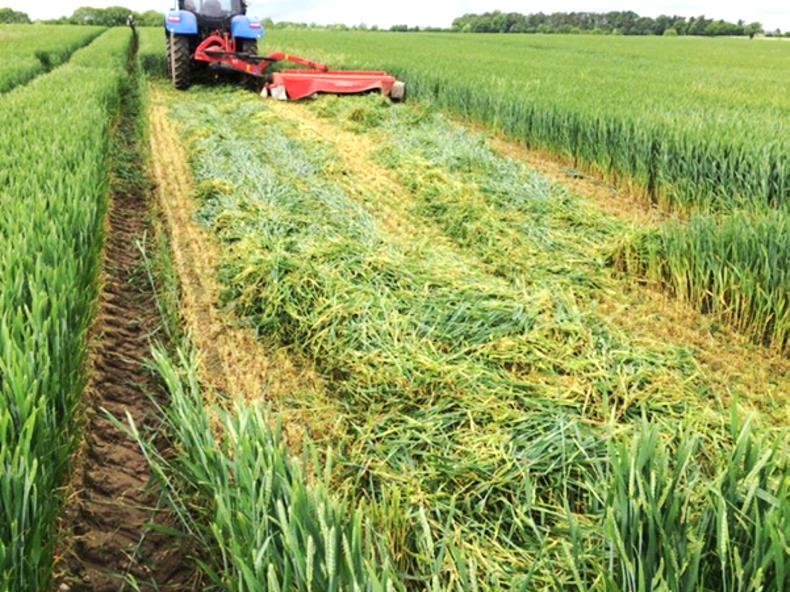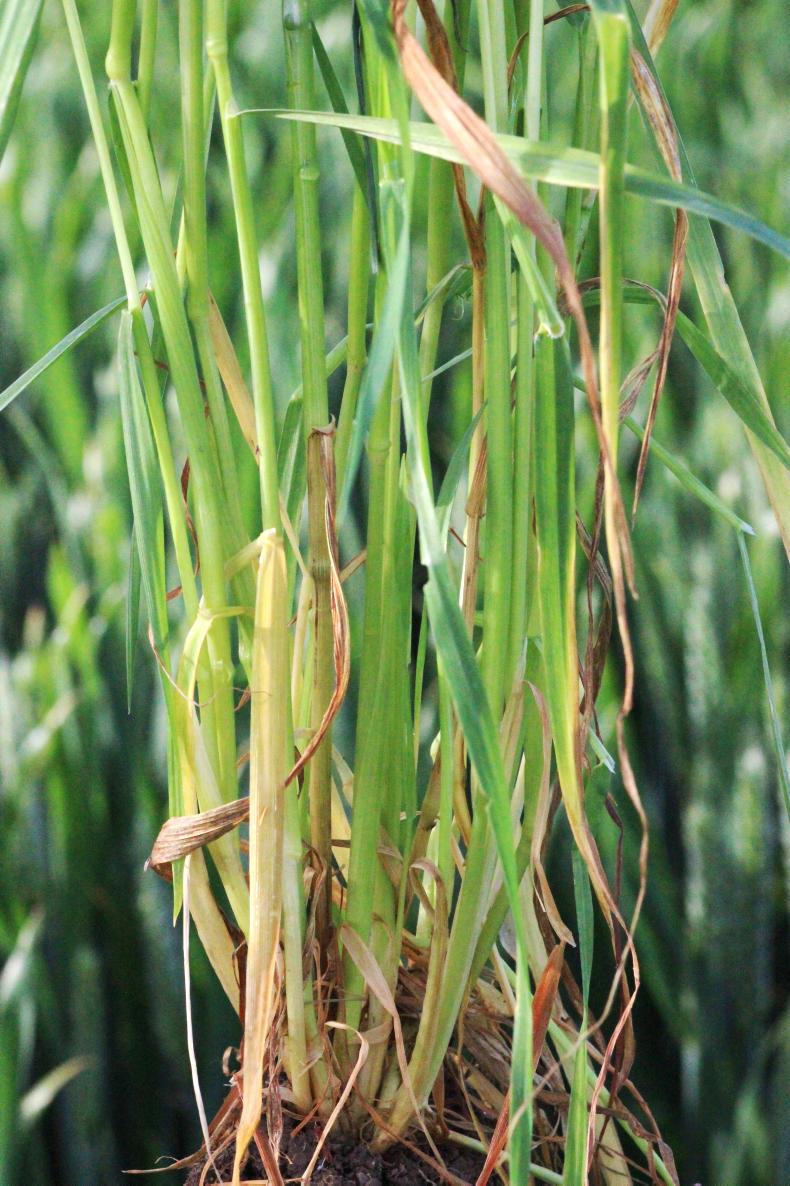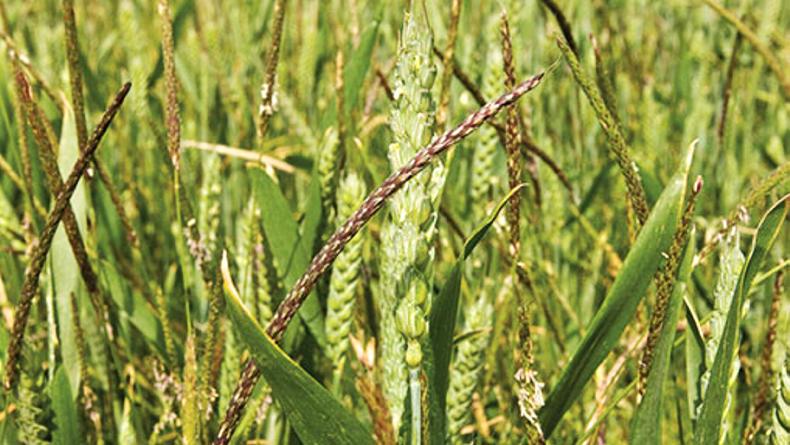Increased minimum tillage, a dry autumn, increased winter barley, a mild winter and a late flush of weeds this spring are all factors which help to explain the increases in grass weeds in tillage fields this year.
However, grass weeds are not just a concern this year and controlling them has been an integral part of growers' crop management regimes for years.
Effective control
Effective grass weed control can be one of the main stumbling blocks when moving away from a plough-based system, as the plough can help manage seed populations in soil.
This was one of the main reasons for the enable conservation tillage (ECT) programme, explains project adviser Jimmy Staples.
The European Innovation Partnership project (ECT) is a Teagasc-led programme, but also involves the industry and farmer groups.
Over the next five years, the project aims to demonstrate effective weed control when moving to a min-till, strip-till or no-till system.
The key weeds in focus are wild oats, bromes, canary grass and blackgrass.
Blackgrass on the rise
Jimmy explains that he has seen increased reports of black grass this year.
However, there is a high likelihood that these are not new cases.
“This weed didn’t just get here overnight, it’s been floating around for a number of years,” he remarks.
There are now a few established pockets of the weed around the country that we know off, including areas in Louth, Meath and Dublin, as well as Kinsale, Co Cork, and Clonmel, Co Tipperary.
He warns that as the weed is present in these areas, it is likely that they will spread.
Blackgrass seed has entered Ireland by many routes, including from English seed and grain sources and machinery.
Blackgrass spreads from farm to farm via farm machinery and possibly through spent compost or in dung where contaminated straw sources were used.
Ferociously unforgiving
The weed is ferocious and will not forgive any lenience shown by growers to it.
Just eight to 12 plants/m2 can lead to a 2% to 5% yield reduction.
The plant also has an incredible ability to produce seeds. One plant every square metre in one hectare can produce six million viable seeds.
What makes this grass even more unique is that it is largely out-crossing, which means that it is breeding new varieties every generation. This enables it to continuously evolve and generate resistance.

Cutting out an area of winter wheat which was badly infested with blackgrass earlier in the year.
Identification
Early and accurate identification is key to learning how to control it.
With that said, farmers are becoming more aware of the weed this year and the issues that it causes, explains Jimmy.
Blackgrass will be long headed out in crops by his stage and seeds will be germinating from now onwards.
The heads carry multiple small seeds which are tightly bound to the stem, but which fall off or thresh easily when ripe.
Seeds will be easily shed by now.
Key identification feature of blackgrass are:
Red/purple colouration at base of stem.Upright growth.Long, slender, dark green leaves.Narrow cylindrical spikelets, similar in shape to timothy or foxtail, but thinner.No auricles present.
Blackgrass is a prolific tillerer. This plant has 23 strong tillers and others had up to 41 tillers.
Once identified, a management strategy can be developed, including IPM practices such as stale seed beds, improved rotation, spring cropping and variety selection.
Grass weed survey
As part of the project, Teagasc is aiming to determine the level and spread of herbicide resistance of Ireland’s key grassweeds.
If you suspect any level of resistance to herbicides in any grass weeds on your farm, especially bromes, blackgrass, canary grass and wild oats, then Teagasc want samples.
Simply collect two cupfuls of ripe seed following a W shape in the field.
Put the seed in a paper envelope and let dry for a couple of days.
Then include your name, address and field details with the sample and send into your local Teagasc office or send them to Jimmy Stables, Teagasc, Oak Park, Carlow. Email Jimmy.staples@teagasc.ie for more information.
Read the full report in next week’s Irish Farmers Journal.
Read more
Blackgrass expanding at an alarming rate
The growing problem of grass weeds
Increased minimum tillage, a dry autumn, increased winter barley, a mild winter and a late flush of weeds this spring are all factors which help to explain the increases in grass weeds in tillage fields this year.
However, grass weeds are not just a concern this year and controlling them has been an integral part of growers' crop management regimes for years.
Effective control
Effective grass weed control can be one of the main stumbling blocks when moving away from a plough-based system, as the plough can help manage seed populations in soil.
This was one of the main reasons for the enable conservation tillage (ECT) programme, explains project adviser Jimmy Staples.
The European Innovation Partnership project (ECT) is a Teagasc-led programme, but also involves the industry and farmer groups.
Over the next five years, the project aims to demonstrate effective weed control when moving to a min-till, strip-till or no-till system.
The key weeds in focus are wild oats, bromes, canary grass and blackgrass.
Blackgrass on the rise
Jimmy explains that he has seen increased reports of black grass this year.
However, there is a high likelihood that these are not new cases.
“This weed didn’t just get here overnight, it’s been floating around for a number of years,” he remarks.
There are now a few established pockets of the weed around the country that we know off, including areas in Louth, Meath and Dublin, as well as Kinsale, Co Cork, and Clonmel, Co Tipperary.
He warns that as the weed is present in these areas, it is likely that they will spread.
Blackgrass seed has entered Ireland by many routes, including from English seed and grain sources and machinery.
Blackgrass spreads from farm to farm via farm machinery and possibly through spent compost or in dung where contaminated straw sources were used.
Ferociously unforgiving
The weed is ferocious and will not forgive any lenience shown by growers to it.
Just eight to 12 plants/m2 can lead to a 2% to 5% yield reduction.
The plant also has an incredible ability to produce seeds. One plant every square metre in one hectare can produce six million viable seeds.
What makes this grass even more unique is that it is largely out-crossing, which means that it is breeding new varieties every generation. This enables it to continuously evolve and generate resistance.

Cutting out an area of winter wheat which was badly infested with blackgrass earlier in the year.
Identification
Early and accurate identification is key to learning how to control it.
With that said, farmers are becoming more aware of the weed this year and the issues that it causes, explains Jimmy.
Blackgrass will be long headed out in crops by his stage and seeds will be germinating from now onwards.
The heads carry multiple small seeds which are tightly bound to the stem, but which fall off or thresh easily when ripe.
Seeds will be easily shed by now.
Key identification feature of blackgrass are:
Red/purple colouration at base of stem.Upright growth.Long, slender, dark green leaves.Narrow cylindrical spikelets, similar in shape to timothy or foxtail, but thinner.No auricles present.
Blackgrass is a prolific tillerer. This plant has 23 strong tillers and others had up to 41 tillers.
Once identified, a management strategy can be developed, including IPM practices such as stale seed beds, improved rotation, spring cropping and variety selection.
Grass weed survey
As part of the project, Teagasc is aiming to determine the level and spread of herbicide resistance of Ireland’s key grassweeds.
If you suspect any level of resistance to herbicides in any grass weeds on your farm, especially bromes, blackgrass, canary grass and wild oats, then Teagasc want samples.
Simply collect two cupfuls of ripe seed following a W shape in the field.
Put the seed in a paper envelope and let dry for a couple of days.
Then include your name, address and field details with the sample and send into your local Teagasc office or send them to Jimmy Stables, Teagasc, Oak Park, Carlow. Email Jimmy.staples@teagasc.ie for more information.
Read the full report in next week’s Irish Farmers Journal.
Read more
Blackgrass expanding at an alarming rate
The growing problem of grass weeds








 This is a subscriber-only article
This is a subscriber-only article









SHARING OPTIONS: